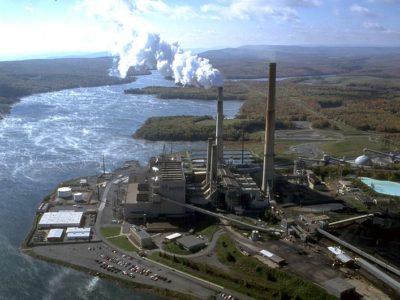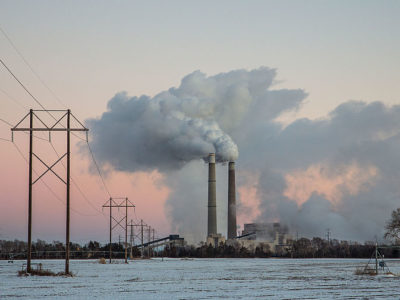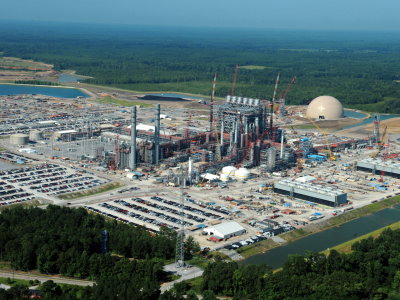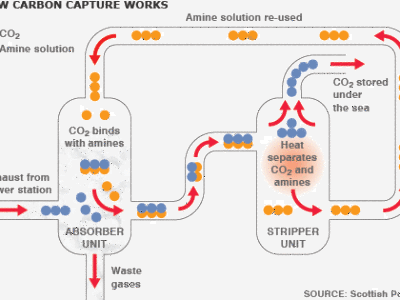carbon capture
Don’t hamstring carbon removal
California needs to lead in developing critical carbon removal technologies
Assessments by the IPCC have made clear that the most feasible way for the world to meet its target of restricting climate change to below two degrees Celsius of warming includes rapid and massive expansion of carbon removal technology – technology that would extract carbon dioxide and permanently sequester that carbon dioxide underground. California has …
Continue reading “Don’t hamstring carbon removal”
CONTINUE READINGEPA Shouldn’t Roll Back Coal Power Plant Emissions Standard, Conclude Experts in Electrical Grid Management and Pollution Control Technology Innovation
Emmett Institute Faculty File Two Comment Letters on Behalf of Experts, Demonstrating Flaws In Proposed Rollback of New Source Performance Standard for New Coal-Fired Power Plants
In 2015, EPA set greenhouse gas emissions standards for new coal-fired and natural gas-fired power plants under the Clean Air Act’s New Source Performance Standards program, Section 111(b) of the Act. These standards ensure that new plants can be built only if they incorporate state-of-the-art emissions controls. Unfortunately, in late 2018, the Trump Administration EPA proposed …
CONTINUE READINGGuest Blogger Ken Alex: Reducing Emissions is Not Enough
Post #8 in a Series on California Climate Policy by Ken Alex, Senior Policy Advisor to Gov. Jerry Brown
[This is the eighth post in a series expressing my view of why California’s actions on climate change are so important and how they will change the world. The introductory post provides an overview and some general context.] Under the Paris Agreement, countries agreed to hold the increase in the global average temperature to “well below 2°C …
Continue reading “Guest Blogger Ken Alex: Reducing Emissions is Not Enough”
CONTINUE READINGUpdate on the Litigation Over EPA’s Rule Controlling Greenhouse Gas Emissions from New Power Plants
UCLA Faculty File Amicus Brief on Behalf of Technological Innovation Experts
Late in 2015, the Environmental Protection Agency issued New Source Performance Standards to control greenhouse gas emissions from new and modified fossil-fuel-fired power plants under the Clean Air Act. This regulation is a companion to the more-often-discussed Clean Power Plan rule, which addresses greenhouse gas emissions from existing sources in the power generation sector. Last …
CONTINUE READINGExploring Potential Challenges to EPA’s New Source Performance Standard: PART III
CCS for coal power plants, but not natural-gas power plants?
This post is the third in a mini-series (see first and second posts) exploring likely legal challenges to the New Source Performance Standard (NSPS) for power-plant greenhouse gas emissions under Clean Air Act § 111(b), and how those challenges might affect the Clean Power Plan. In my first post on EPA’s New Source Performance Standard …
Continue reading “Exploring Potential Challenges to EPA’s New Source Performance Standard: PART III”
CONTINUE READINGIs Carbon Capture & Sequestration (CCS) the Biggest Threat to the Clean Power Plan?
Exploring potential challenges to EPA’s New Source Performance Standard: PART I
This post is the first in a mini-series exploring likely legal challenges to EPA’s New Source Performance Standard (NSPS) for power-plant greenhouse gas emissions under Clean Air Act § 111(b), and how those challenges might affect the Clean Power Plan. I will leave detailed exploration of the Clean Power Plan for later posts, but suffice …
CONTINUE READINGCapturing Carbon
A recent CRS report provides a wealth of information about carbon capture. You can learn a lot about the various technologies and how close or far they are from possible adoption. But for most of us, the technical details matter less than the answers to some key questions: Is carbon capture technically feasible? Can it …
Continue reading “Capturing Carbon”
CONTINUE READINGNew bill in Congress by Rockefeller (S. 3072) would delay regulation of GHGs under the Clean Air Act
As Cara and I have already discussed in detail, the Environmental Protection Agency has committed to delay the rollout of regulation of stationary sources of greenhouse gas emissions under the Clean Air Act, and to regulate only the very largest sources. This backtracking from EPA has been a response to efforts by Senator Lisa Murkowski …
CONTINUE READINGFailing to “Do the Math”
Remember that DOE canceled the demonstration project for carbon sequestration in Matton, Illinois because of cost over-runs. It turns out that they screwed up the numbers, according to GAO. Now that DOE has a Nobel prize winner at the helm, maybe its math skills will improve.
CONTINUE READINGThe future of coal-fired electric power
Tomorrow’s New York Times has an interesting article on the future of coal-fired electric power in the United States. Coal is responsible for fully 20% of greenhouse gas emissions worldwide, according to the Pew Center on Global Climate Change. “Clean coal,” meaning coal plants that result in no net emissions of carbon dioxide, would be possible only …
Continue reading “The future of coal-fired electric power”
CONTINUE READING








